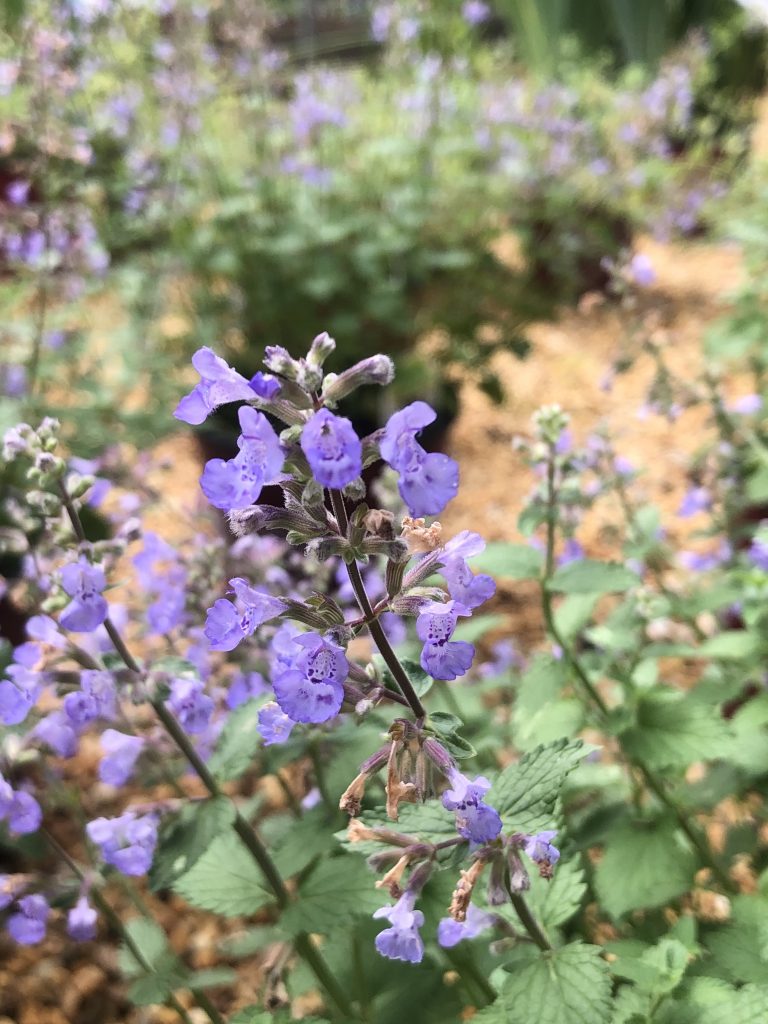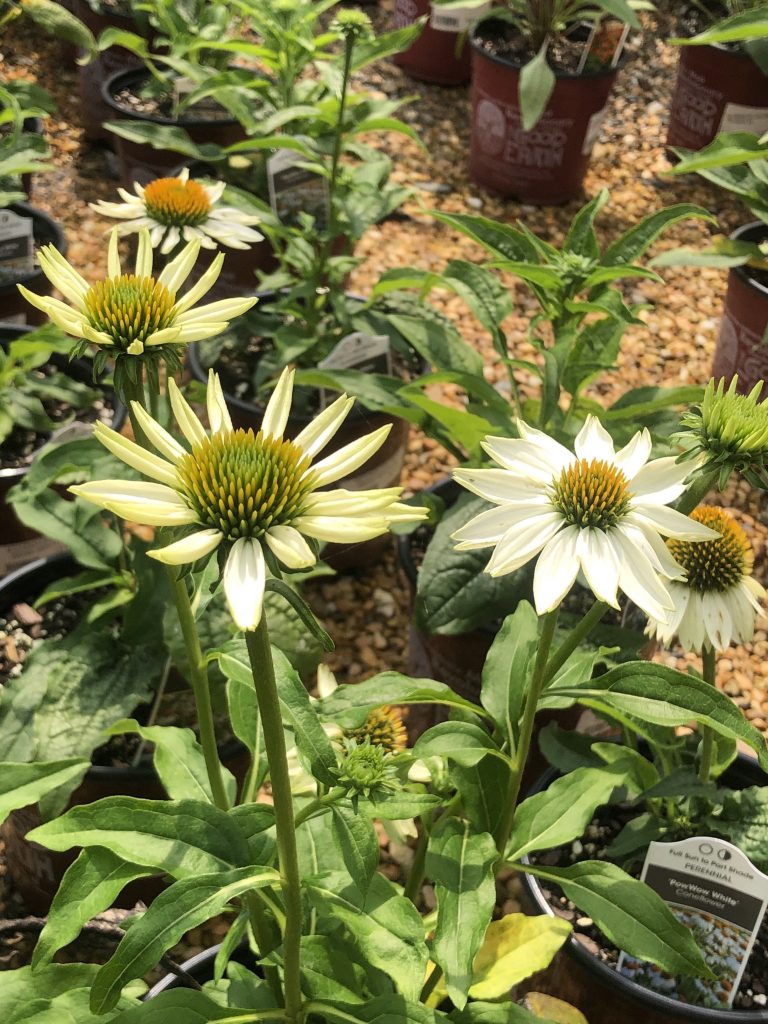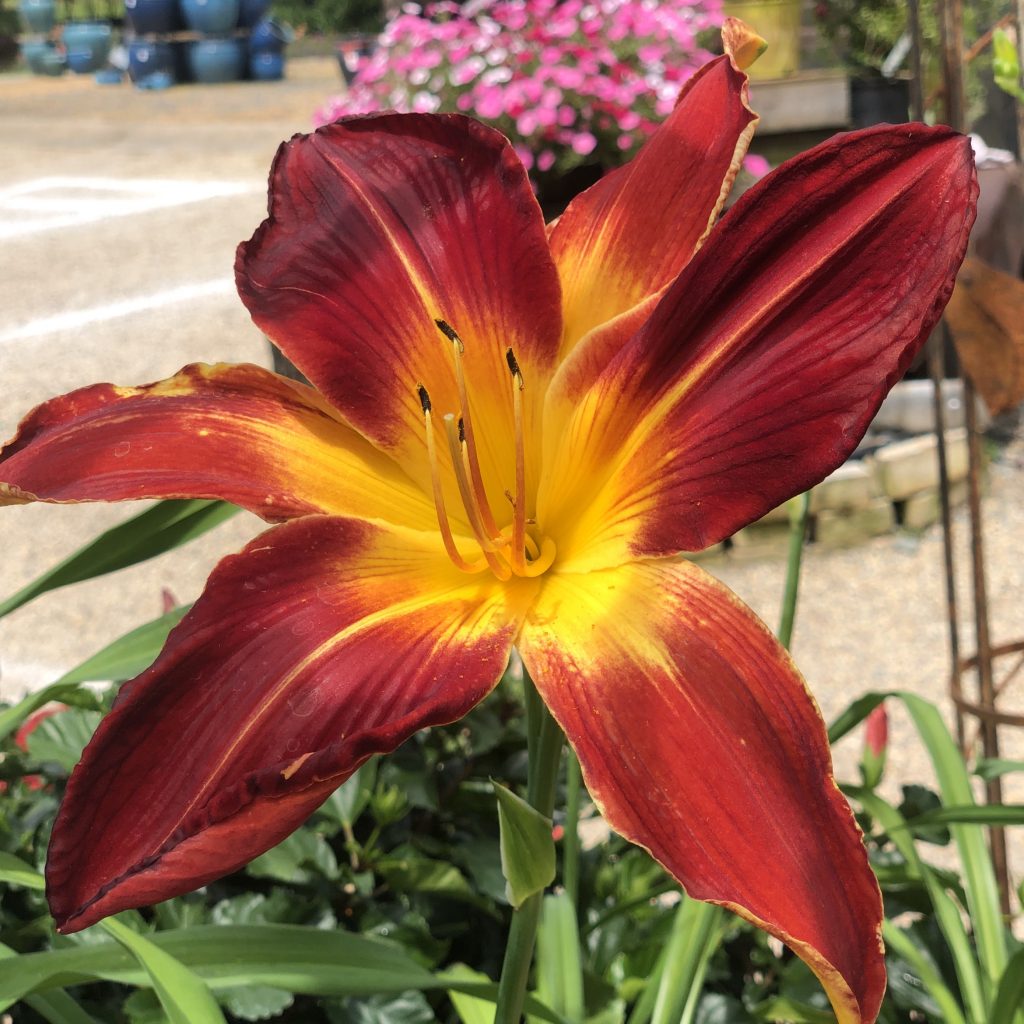June is Perennial Gardening Month

June is Perennial Gardening Month
The Good Earth began as primarily a nursery and growing facility over 48 years ago. Throughout the past four decades, we have become a full service garden center but that doesn’t mean we have forgotten our roots! We still grow most of the perennials we sell; just look for the maroon pots with our logo. These contain perennials we have grown right here, just for you.
‘Purrsian Blue’ Catmint
With June being Perennial Gardening Month, we thought we would introduce you to a few that are in bloom or about to bloom right now. The first image (above) is a favorite; it is a catmint called Purrsian Blue (Nepeta faassenii ‘Purrsian Blue’). This low maintenance perennial is more compact that most other catmints and offers more blooms that are closer together than other varieties. It’s also deer and rabbit resistant, attracts all kinds of pollinators such butterflies, hummingbirds, and bees. In addition, catmint has a long bloom season (early summer to early fall). Loves the sun and heat so it take summer in stride. Mature size of this variety is 14-16″ tall and 18-30″ wide. Purrsian Blue, much like all catmints, has average to low water needs; plant in well-draining soil with a neutral to alkaline pH.
So, what’s the difference in catnip (Nepeta cataria) and catmint (Nepeta faassenii)? Same genus, different species and different effects on cats. A high percentage of cats (around 70%, based on genetics) go wild over catnip and will eat the leaves for the euphoric effects of Nepatalactone in the plants. In contrast, when stems of the catmint are broken, cats may be attracted to the released scent.

Coneflower is a native flowering perennial in much of the eastern United States. We carry many nativars of this plant. A nativar is an improved variety of a native plants. Bailey Nurseries, a plant breeder, offers these thoughts on nativars:
“Nativars allow us to retain the ecological benefits of native species while making them adaptable and accessible for a modern landscape. Whether that means a more compact size, cleaner foliage, better color, or a tidier appearance, nativars solve problems that can arise” with the genotype.
Since the introduction of nativars, there have been discussions on whether these plants are beneficial for pollinators like thier truly native cousins. Several studies, including one performed by the University of Delaware, concluded that yes, nativars support insect and bird life.
‘Pow Wow White’ Coneflower
Coneflowers (Echinacea) have long been used for their medicinal qualities. New varieties are released fairly often; one we have grown for years is the Pow Wow series, including ‘Pow Wow White’ (pictured above). We also grow ‘Pow Wow Wild Berry’ (a deep rose, purple color bloom). Both offer prolific blooms, sturdy flower stalks, and a compact growth habit. They love full sun, are tolerant poor soil, heat, humidity and are drought tolerant once established. What more can you ask for in an Arkansas perennial? Oh, they make great cut flowers too and if the spent blooms are left on over winter, the seed heads offer a food source for birds.
We also have ‘Sombrero Adobe Orange’, ‘Cheyenne Spirit’, ‘Mellow Yellows’, and ‘Magnus’ right now (early June 2020).

‘Ruby Spider’ Daylily
We teased you a bit with this flower image and kept it for last, knowing you would keep scrolling… because wowza, is this eye-catching! Daylilies are starting to bloom around town; you have most likely seen the mild yellow blooms of ‘Happy Returns’ or the gold glow of the ‘Stella de Oro’, both of which are outstanding reblooming varieties. And yes, we have these available for purchase, as well as ‘South Seas’ (a beautiful color color), ‘Aztec Gold’ (a larger gold rebloomer), and ‘Gentle Shepard’ (which is known for being one of the best white daylilies available and features 5.5″ blooms).
So, about ‘Ruby Spider’… what you can’t tell from this image is the bloom size, which is quite large. In fact, the blooms on this plant can reach up to 9″ across, offering big visual impact in any garden. We also grow ‘Primal Scream’, new to us this year, which features up to 7.5″ bright orange flowers.
Good Earth Perennials
Since we grow our own perennials, when we sell out of a crop, it can be awhile before more are available, especially depending on the season. Plants listed here are available today (June 4, 2020); tomorrow… they may not be! If you are looking for something specific and are coming from a good distance, we always suggest giving us a call to confirm quantities.
Last but not least, this post got long; we had many more perennial to talk about so expect more blog posts about perennials soon. Especially because June is Perennial Gardening Month! In the meantime, learn more about all kinds of perennials on our Inventory page. Look in the red bar above the photos and select your sun situation to find ones that might work best for your garden.